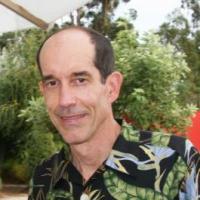SystemX Affiliates: login to view related content.

The triumph of LIGO’s confirmation, at this 100th anniversary of Einstein’s prophetic work, both of gravitational wave propagation and their full GR source dynamics is astounding enough to recount. An exciting new field has been launched, and grown in either its experimental or astrophysical scope beyond the compass of one talk. Only briefly, I will first present an overview of the LIGO instruments with insight into their roots in the classic “interferometer of Michelson” (findings so inspirational to Einstein) over 130 years and > 1010 in metric resolution ago. Next, the amazing nature of the binary black hole coalescence events detected will be spotlighted. Rather than due to particular conspicuous technical innovations, I emphasize that human scientific vision sustained this quest from the time of Weber and realization that BHs and GWs should be palpable. Certainly the culmination in LIGO’s discovery 60 years later is essentially due to the perseverance and faith of remarkable visionaries carrying on through much adversity and periods of doubt. Turning from the drama, I’ll take a personal, insider view of a selection of fascinating technical challenges faced in LIGO. The message will be that focused, meticulous engineering carried out by dedicated and ingenious scientists will carry the day. Seemingly unglamorous details such as thorough understanding of materials thermal and mechanical characteristics; vacuum technology; and ultra-low noise servo-mechanical strategies take center stage!
Awe of the heavens was what inspired me to science in those heady times of discovery, 1950s- 60’s: era of nascent space exploration, Quasars, new elementary particle every day, SLAC, the laser probing everything,….. then all amplified by attending Caltech (class of ’70) which seemed at the center of the ferment! The force of Feynman was strong in me so I gravitated to particles and fields. But I can vividly recall the excitement over Hawking’s pronouncements on black holes and Weber’s GW detections. The allure of cosmology and its young Turks like Thorne and Penrose became part of my culture. The funding crisis of the early 70’s (not to mention the War!) derailed me from pure theory into hands on experimental Physics under one of its old school masters, Val Telegdi (U. Chicago). Various adventures with muonium, neutral Kaon spectroscopy, and even pioneering parity violation in atomic spectroscopy eventually lead to a Ph. D. in 1976. FermiLab then being the bright new frontier in particles soon drew me in, and I spent well past the next decade primarily in accelerator Physics, developing the anti-proton beam technologies eventually employed in the Tevatron collider. A few memorable years of this era saw me in Seattle (H. Dehmelt) trapping electrons, anti-protons (well, at CERN) and the like. Liking this taste for such smaller scale projects lead me to leave Chicago, once again for Pasadena, building and commissioning deep field cameras for the Palomar 200” (still then the largest telescope!). When on the verge of becoming a true astronomer I got the call to join Caltech/LIGO at its mid-90’s emergence as a major project. This return to Caltech, now as a colleague of my undergrad heroes: professors Thorne, Schmidt, Vogt, Barish, et al remained a heady experience. Principally involved in the development of the interferometer’s core precision optics I became a senior research scientist at Caltech.


